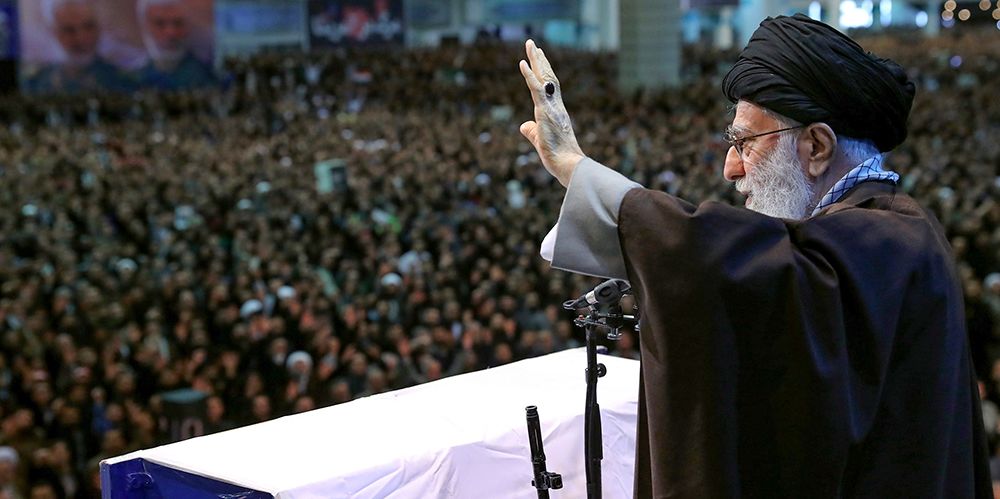Search

Publications
The role of spiritual leader in modern Iran

The institute of «Rahbar» (leader in Persian) in Iran is unique in the world. After the Islamic Revolution of 1979, the Supreme Leader is the highest public position stipulating for very broad authorities and mechanisms affecting all the spheres of the state activities without exception. During the years that the Islamic Republic of Iran exists, a unique political culture was formed in this country, where the spiritual leader plays the role of a universal mediator and ultimate authority, but never a monopolistic leader of the country.
Ideological basis
First of all, we need to mention, that the position of the Supreme Leader in Iran, despite all his religious influence and broad powers, is not interpreted as the vicegerent of Allah, as someone may mistakenly think. Neither he is believed to be of divine origin.
Ideologically, Rahbar is rather an intermediary between the so-called Absent Imam and the Moslem community (ummah). To a significant extent it is underpinned by a unique principle of power transfer in Shiism: only imams – the interpreters of faith and direct descendants of Prophet Mohammed and his cousin and son-in-law Ali – could be the leaders of religious community. Overall, eleven imams including Ali himself are known. The twelfth imam was lost or «absent» when he was still a child. According to the concept popular in Iran, this last imam will be back as a messiah, while currently he leads the community through his proxies – the most prominent theologists and Shariah adepts – the faqihs.
It is believed that the faqihs fulfil the will of the twelfth righteous imam. The Supreme Leader of Iran is such faqih.
For the first time the concept of power based on the Velâyat-e Faqih (the power of faqih) principle was described by Ruhollah Khomeini, the leader of the Islamic Revolution. Based on Shia tenet about the intermediary between the Absent Imam and the ummah, and also emphasizing that only Shariah – the Moslem law – should regulate the economic, political, judicial, social and cultural spheres of the state, Khomeini transformed traditional perceptions of power and introduced the concept of the Islamic Republic and the Islamic People’s Rule. [1]
Hence, the Rahbar institute in Iran incarnates the idea of inseparability of Islam and politics, which was the foundation of the Islamic Revolution. The Velâyat-e Faqih principle effectively legalized the power of the clergy. Later, the current Supreme Leader of Iran Ali Khamenei in his numerous speeches claimed that the religion should determine the politics and only such governance system as Velâyat-e Faqih can satisfy the needs of people and assure justice and well-being of the society. [2]
Rahbar and Constitution
After the Islamic Revolution of 1979, imam Khomeini became the first Supreme Leader of Iran. When the new Constitution of the Islamic Republic was being developed, there were numerous discussions about the broad authorities of the religious leader. Eventually, the Rahbar institute was fixed in the Constitution as the highest public position not only to execute Imammah, i.e. public governance, but to have mechanisms of influencing practically all spheres of the national life.
The Supreme Leader’s authorities are very broad: his rights and responsibilities include a number of functions of legislative, judicial and executive power. Thus, he determines the overall policy of the state, controls duly implementation of the political strategy, performs as the commander-in-chief of the Iranian Armed Forces. Also, according to the Constitution, Rahbar appoints the head of judicial power branch, the chief of the General Staff, the commander of the Islamic Revolutionary Guard Corps (IRGC).
On top of that, the Supreme Leader assists in solving the problems, which cannot be settled by the Expediency Discernment Council of the System – the body designed for resolution of disputes between the Council of Guardians and the Mejlis. Rahbar has the authority to sign the Decree about the elected President’s inauguration or to remove him from power in case he acts against national interests. [3]
Only the Supreme Leader can initiate Constitutional changes. The only time significant amendments were introduced was in 1989, not long before Khomeini’s death. These amendments were made in favor of Khamenei, who was elected Rahbar as the successor, however, he did not have the highest clerical status required by the Constitution to become the leader. In 1989, the Constitutional amendments removed this requirement.
At the same time, despite the apparent authoritarianism of the Iranian political system, the institute of Rahbar in particular, it has certain democratic elements. For example, from the formal point of view the Constitution does not provide for a life-long term of the Supreme Leader: the Council of Experts consisting of the higher Shia clergy representatives elected by the people every 8 years, has the authority to dismiss Rahbar, if they believe he is uncapable of performing his duties. The same body elects the new leader.
In the Supervisory Council overseeing the compliance of the Parliament’s decisions with the Islamic rules, six members are appointed directly by Rahbar, and the other six are elected by the Parliament.
In general, the Iranian state system may be characterized as a combination of theocratic and republican elements, where the first ones prevail. [4]
However, over the decades of the Islamic Republic existence, this system numerous times demonstrated its flexibility and the capability for evolution. Thus, regular elections of the President, the Parliament and local councils held on an alternative basis with active participation of the citizens, are viewed in Iran as an achievement of the Islamic democracy. [5]
Given all the specificity of the governance system in Iran, the unique political culture having developed over the last 30 years after the Constitutional reform of 1989 brings even more complications. The combination of domestic political struggle with the personal perceptions of Ali Khamenei about the role of the Rahbar institute in Iran formed peculiar political practices in today’s Islamic Republic.
Thus, the actual role and position of the spiritual leader in modern Iran is significantly different from the perception one might get by thoroughly studying just the legal aspect of this issue.
Political context
Formal understanding of the spiritual leader’s authorities often brings external observers to an idea of him having the monopoly with respect to all decision-making in the country. However, analyzing the real political practice tells us that this idea is far from reality. We can refer to the fact that each time the new President came into office, both the domestic and foreign policies changed significantly. It demonstrates that the presidency institute defines the national policy to a great extent.
The relations between Rahbar and the President in the Islamic Republic of Iran to a certain extent resemble the relations between the President and the Prime Minister in a parliamentary republic. The leader is in charge of the strategic course and forming the political framework for the possibilities, while the President – above all – and then the parliament (Mejlis) and other bodies are in charge of implementing the state policy into practice.
Being an official deputy of the Supreme Leader, the President mainly deals with internal governance and economy. As for the national security, formally it is also within the competence of the President, however, in practice a lot depends on his personality.
For example, Ali Akbar Hashemi Rafsanjani (1989-1997) was the key figure in the national security sphere in 1990s – the period, which is often referred to as «The Second Republic» after the revolution-related euphoria of 1980s. [6]
Neoconservative views Mahmoud Ahmadinejad (2005-2013) gave an unprecedented impetus for increasing the role of IRGC in the domestic policy.
On the contrary, the executive power bodies at the time of Mohammad Khatami (1997-2005) hardly had any weight at all and only in the formal procedures, in non-crisis situations and in interaction with the countries not being of big interest for Iran. [7]
We can say that a unique managed democracy system has developed in Iran. Thus, the majority of candidates for presidency are banned from running as they cannot pass through the respective filters, and the Supreme Leader’s opinion is one of the key filters here. At the same time, practically all presidential campaigns in Iran during the recent 30 years went in the stiff competition environment and their outcomes could not be predicted. Despite the fact, that some politicians had certain restrictions against them in the electoral process, the authorities still leave some room for political competition.
Thus, in the Nuclear Deal context, the Supreme Leader initially did not support the approach of improving the relations with the USA, however, Hassan Rouhani, the advocate for the dialogue with Washington, won the election campaign exactly at that time, and Khamenei approved him. Then, some analysts believed that such support of the President by Rahbar to a certain extent meant the re-consolidation of power in the hands of Rouhani. [8] At the same time, we need to admit that the President is often given quite a broad discretion in order to make him responsible, and it was exactly what happened with Rouhani after the Nuclear Deal failed.
Hence, the spiritual leader in Iran is the figure that sets the red lines and the framework for opportunities, and all the other authorities are acting within such established limits. Also, it is worth noting that the Iranian political system, just like the society itself, is not monolithic. The political struggle takes place not just between the conventional conservatives and reformers, but inside these groups, as well.
Coming into office of the incumbent President Ebrahim Raisi may be a bright example of this. Initially, he was perceived as a consensus figure for the conservative society. He was believed to have the support of the leader, however, this year, when the economic situation is not improving and the same problems are being reproduced again and again, some conservative media are openly criticizing him. [9] It tells us that political process in Iran remains alive and unpredictable.
The spiritual leader does not stand above this process, but actively participates in it, actually accepting the rules of the game. Some experts emphasize that «Khamenei may be called a «power broker», but absolutely not an absolute ruler. He is under constant pressure to balance-off the competing centers of power». [10]
1. Shia clergy in political life of modern Iran. Dunayeva E.V. Global transformation contours: politics, economy, law. 2018.
2. Khamenei A. Speech at the opening of the all-Iranian Juma imams’ meeting. Hadith-e Velâyat. 11.09.1995. Electronic Islamic Science Studies Center.
3. Constitution of the Islamic Republic of Iran.
4. Shia clergy in political life of modern Iran. Dunayeva E.V. Global transformation contours: politics, economy, law. 2018.
5. The Orient and politics. Political systems. Political cultures. Political processes. Voznesensky A.D. 2011.
6. After Khomeini: The Structure of Power in the Iranian Second Republic. Political Studies, vol.39, no.1. 1991.
7. Iran’s Foreign Policy and Its Key Decision Makers. Amir Ali Nourbakhsh, 18.04.2015.
8. National Security Decision-Making in Iran. Kevjn Lim, 2015.
9. Honeymoon ends for Iran’s president as bipartisan criticism rises, Amwaj Media, Apr. 21, 2022.
10. National Security Decision-Making in Iran. Kevjn Lim, 2015.







